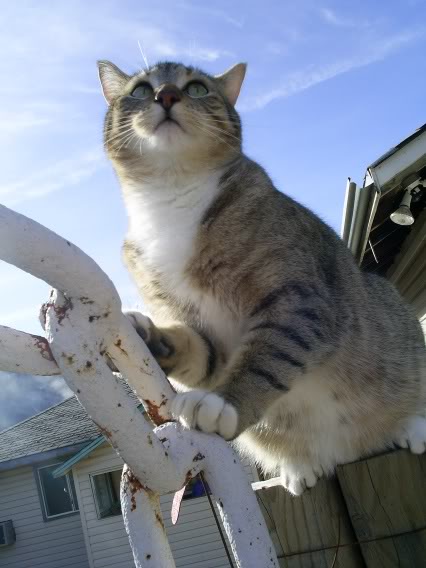I don't think there are a lot of people that don't like a pet in their home. There are very different kinds of animals that you can bring home and with witch you can spend your life in a very pleasant way. There are, for example people that like small birds as a pet. I must confess that I am one of them. That's why I will present to you in this article some very beautiful and popular birds as pets: the African grey. It is a very beautiful specimen of parrot that has a personality of it's one.
The African Grays are in fact known in books under the name of Psittacus erithacus. They can be found in their natural environment in several African countries. The nominate species are in fact known as the Congo Grey. This species contain two subspecies: Psittacus erithacus timneh and Psittacus erithacus erithacus. The first one - Psittacus erithacus timneh is also known as Timneh Grey. We may also find names as "Cameroon" or "Ghana" Grey. These represent the same species but also show the origin of the bird. But there is a catch: since the laws regarding importation was voted, many sellers of Greys in Africa have started to lie about the origin of the birds they sell. So a good advice is in order to be said: do not always believe the origin of the pet is the one in its name.
Now that the classification of the pet is clarified the transaction can be made. First you must decide what kind of parrot you want: a young one or a mature one. Of course many people want a young pet. This can be found relatively easy. There are four sure sources from were you can obtain an African Gray:
- First is the easy way: you can purchase one from a pet store
- If you want something special you can find a breeder
- Or if you really are hard to please you can talk with a private breeder and tell him to breed for you an African Gray.
- There is a forth way of getting such a pet: from a rescue facility. If you would ask me this is the best way if you want to - help a poor soul and not only to have your one friendly slave".
Everybody wants a pet but very little are interested to care and rightly treat such a pet. Why do I say this? Because the problem with unwanted pets is very real and African Grays are no exception. So the last solution that I recommended the rescue facility- it is not recommended for those who haven't the time, the financial resources or the patience to rehabilitate such a pet. Between you and me, for such a people I wouldn't recommend to have a pet! There are studies that show that in a few years a very big number of unwanted parrots are to be exterminated by euthanasia because of such people. An example of such a study was presented during a Symposium held by The Gabriel Foundation. The same Symposium showed something terrifying: only ONE PERCENT of the people have the the emotional, financial, physical, and monetary means to properly care for a parrot. So, my advice to you is to become part of this one percent or if not, better for you and the pet, stay without one.
If you consider that you can take care of such a pet, the next step is to buy one. Do not be tempted to buy a young pet. Do not be afraid to buy an older parrot because they can also be very friendly and of course more easy to adapt to your environment. Once you have found a breeder the next step is to make sure that the bird you will be taking home is well-socialized and that is why I recommend to take a mature parrot- and of course, you must make sure that the bird is weaned first. This action, in the Gray case, takes between 12 and 16 weeks. Another advice is not to attempt to wean a bird yourself! Why? Because you can give your bird a bacterial infection, a sour crop or even a crop burn. Another thing that you must let to the professionals is hand feeding.
The life perspective of a Gray is between 50-60 years with a proper diet of course. So, therefore, a 10 or 15 years old parrot is in fact a teenager. If you will take a parrot from a breeder, my advice to you is to feed him with the same food the breeder gave him. Another thing you must do is to assure yourself from the breeder that the bird allowed to fledge. This is very important especially if the bird is young because flying gives him confidence, muscle tone, and balance. Of course, unless your house is completely bird-proof, once you will by the bird his wings must be cut. Also, consult a vet if you have other pets in the house.

 Weekend Retreat Tips - 15 Common Vacation Disability Benefits You Can Remain!
Points of interest. russian trips are good methods for those
Weekend Retreat Tips - 15 Common Vacation Disability Benefits You Can Remain!
Points of interest. russian trips are good methods for those
 The Language Makes For An Great Vacation Hire?
1 more unique vacation home business that is to be had durin
The Language Makes For An Great Vacation Hire?
1 more unique vacation home business that is to be had durin
 Notes For Your Vacation Rental Pet Policy
Sometimes the blues could very well set in and after a vac
Notes For Your Vacation Rental Pet Policy
Sometimes the blues could very well set in and after a vac
 Why Wetlands Are An Critical Aspect Of Eco
Pets are usual areas of peoples lives it isnt really at all
Why Wetlands Are An Critical Aspect Of Eco
Pets are usual areas of peoples lives it isnt really at all